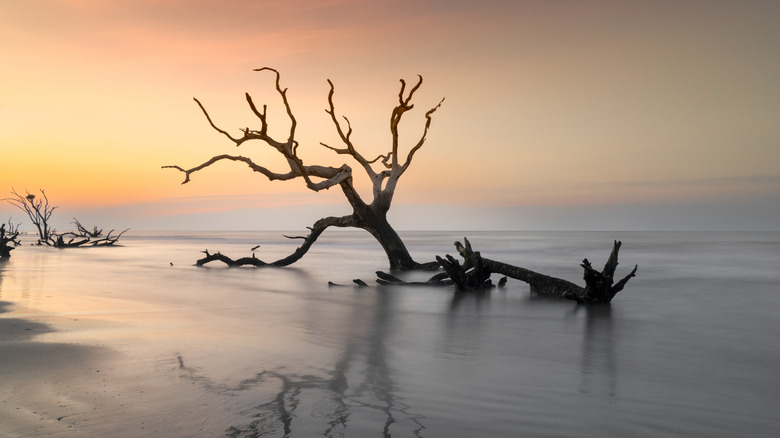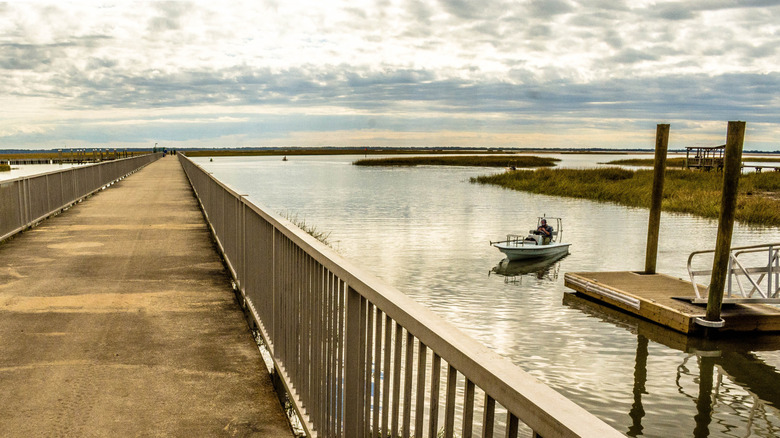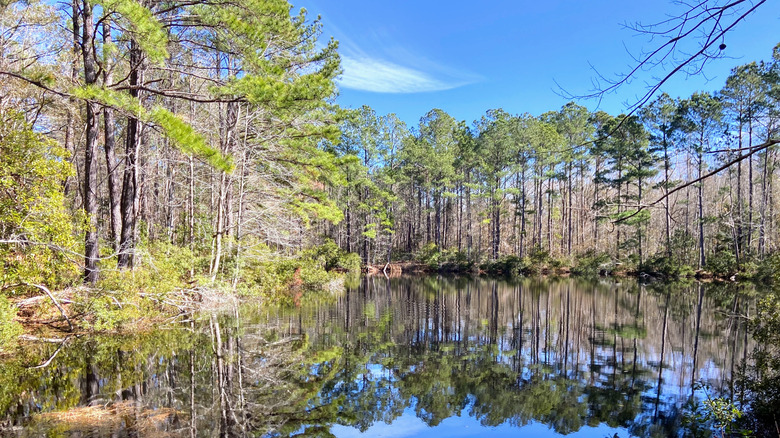Hidden On South Carolina's Coast Is A Secret Nature-Based Town With Sandy Beaches And Serene Marshes
There's something calming about places that center themselves around nature instead of urban infrastructure. Here, nobody can disrupt your peace, and you always feel rejuvenated. Add beaches to that equation, and suddenly, you're ready to replace the world's most iconic downtown skylines with ocean vistas, coastal air, and unspoiled landscapes. When in South Carolina, you can experience that tranquility in Awendaw, where outdoor adventures are a stone's throw away.
Prior to colonization, Awendaw was inhabited by the Sewee tribe, or "Islanders." In the 17th century, the area provided shelter for those fleeing the Salem Witch Trials, who then established the town as "Wappetaw." It was later renamed "Awendaw," which translates into "Red Clay." Much of Awendaw's rural setting has been preserved over the years, even when Hurricane Hugo hit South Carolina in 1989 and caused a lot of destruction. Nowadays, this hidden gem of a destination is the perfect escape when Charleston starts to feel too busy and you want to disconnect from your daily routine. From seemingly endless trails to mystical beaches, you have every reason to choose Awendaw as your next getaway.
When it comes to accommodation, you'll have to find lodging in nearby cities, such as Mount Pleasant and Charleston. However, it shouldn't be a problem, considering you'll be landing in Charleston International Airport if you're flying in — from here, it's only a short 40-minute drive to Awendaw. The Holiday Inn Express and Suites is a good option in terms of amenities and location — take advantage of the pool and fitness center, have a satisfying breakfast, and reach Awendaw in just 20 minutes. The same goes for the Hampton Inn and Suites and Hyatt Place Mount Pleasant Towne Centre. Many people recommend Sweetgrass Inn, too, especially if you're traveling with your family — although it's a little farther, about 40 minutes away.
Soak in Awendaw's salt marsh and beach panoramas
Expansive salt marshes spanning around 66,300 acres make up Cape Romain National Wildlife Refuge, which you can access with a 30-minute ferry to Bulls Island. Taking up 22 miles of the shoreline, this haven is a wonderful place to immerse yourself in nature. Whether you're into birdwatching, beachcombing, hiking, or fishing, the great outdoors is yours to explore. More than 293 bird species have been spotted in the refuge, so keep your eyes peeled for wood storks, marsh wrens, white pelicans, and peregrine falcons. On top of that, this is where the loggerhead sea turtles nest, with the peak season being in June and July. Anglers can fish for flounder and spotted seatrout, as well as enjoy crabbing and shrimping.
Avid hikers can follow either of the two designated trails in the refuge or create their own paths on unpaved service roads. The out-and-back Turkey Walk Trail guides you toward grasslands, oak forests, and tidal flats. While it's a short one — only 1.7 miles long — you might catch a glimpse of a white-tailed deer, shorebirds, and plenty of alligators. The trail to Boneyard Beach is the more popular choice. Spanning three miles of the South Carolina coast, this mysterious beach is dotted with cedar, oak, and pine skeletons, bleached by the scorching sun and salt water. When you're not taking pictures of the scenery, scavenge the beach for sand dollars and other creatures or objects that have washed ashore.
Next to Bulls Island is Capers Island, where you'll find more tree stumps along the shore. You can set up camp here as long as you have a permit — but keep in mind it's going to be primitive. Bring all essentials like a tent, sunblock, sleeping mat, bug spray, enough firewood, and so on.
Awendaw features unique flora and fauna
Birdwatching enthusiasts searching for the best destinations in the U.S. can make their way to the Avian Conservation Center to view one of the country's largest collections of bird species. From hawks and eagles to owls and vultures, you'll get to observe these birds' behaviors as they hunt for prey and soar overhead. As you tour the facility, you'll learn about the techniques that birds of prey employ to successfully attack their target, followed by a live demonstration. Don't forget to check out the center's Countess Paolozzi Owl Wood, which houses around 14 owl species from all over the world.
The 260,000-acre Francis Marion National Forest is a local favorite for hiking, biking, horseback riding, and wildlife watching. A one-mile-long boardwalk exposes you to some of the forest's distinct plant varieties, like the carnivorous trumpet pitcher and 32 different kinds of orchids. Be on the lookout for black bears, otters, and bobcats while you're at it. You'll also come across two interesting geological features within the forest — Carolina bays and limestone sinks. What's more, Francis Marion National Forest is home to one of the oldest shell rings in the country, the Sewee Shell Mound. This 4,000-year-old site was left behind by the Sewee tribe, the purpose of which is yet to be discovered — some claim it had ceremonial motives.
Cap off your visit to Awendaw with a stop at the Sewee Visitor and Environmental Education Center. Learn about the maritime forests and ecosystems, fish in the ponds, and witness two endangered red wolves from the viewing platform. When you've had your fair share of city-life detox, drive 50 minutes north to arrive at Andrews, a friendly South Carolina town with old-fashioned charm.


